How To Read An Avalanche Report
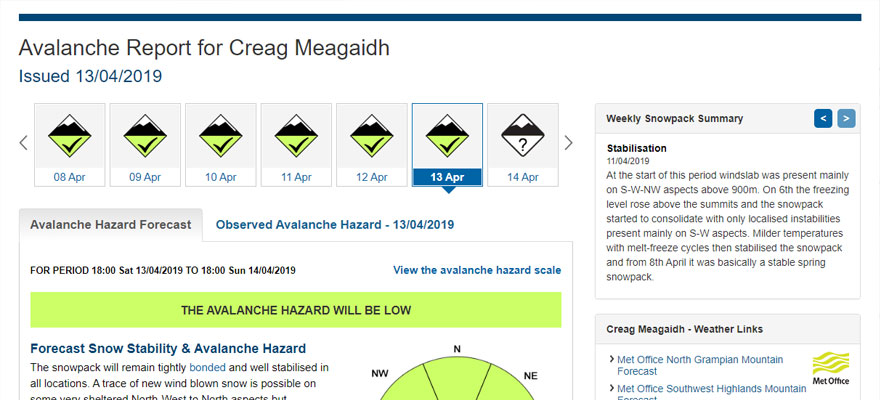
The consequences of triggering or being caught in an avalanche can be huge, so it’s important to minimise the risk of this happening as much as possible. One way to do this is to use an avalanche report to plan and map your backcountry route.
How is an Avalanche Report Compiled?
To generate an avalanche report highly trained forecasters travel into the field collecting info, observing and taking samples. Once back at base they bring together all the information and feed it into a computer. This analyses the data along with the local weather report, atmospheric conditions, snowpack, historic avalanches and more to produce a set of findings. The different forecasters will then discuss the findings and before the head co-ordinator approves it to be published.
![]()
Avalanche Report
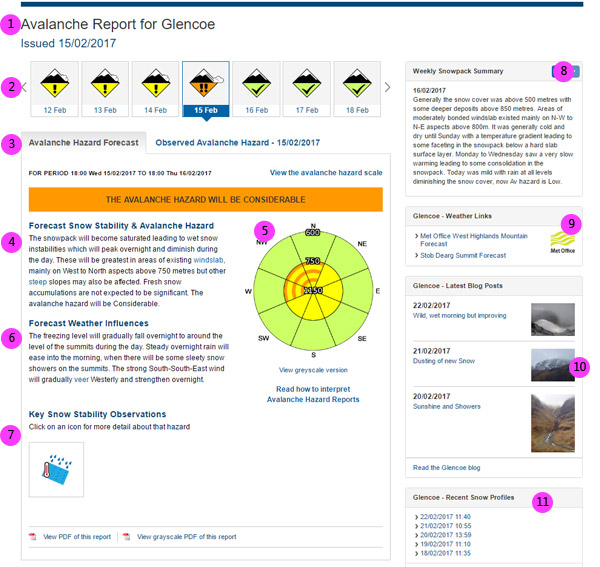
- 1. Area and date of report
- 2. Current avalanche warning and previous reports: the chance of an avalanche happening and what it has been in the preceding days.
- 3. Avalanche hazards or observed avalanche hazard: two tabs of detailed info that build an image of the current conditions.
- 4. Snow stability and avalanche hazard: details area of terrain to avoid and zones vulnerable to avalanche.
- 5. Hazard rose: shows the avalanche risk of each aspect of the mountain at a certain height.
- 6. Weather Forecast: will potentially influence the risk of an avalanche.
- 7. Snow stability observations: these highlight the main risks in the snowpack.
- 8. Snowpack summary: a weekly description of the snowpack, used to discover season-long problems/risks.
- 9. External weather reports: add further detail to your decisions.
- 10. Weather blogs/photos: a visual aid to help influence decisions.
- 11. Current and previous snow profiles: historic data that can act as a guide to current conditions.
![]()
Avalanche Hazard Icons
![]()
Avalanche Hazard Rose
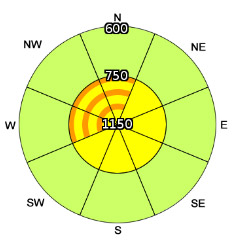
Imagine you have a bird’s eye view and are looking directly down on to the mountain; that is the easiest way to interpret this diagram. The centre of the rose is the peak of the mountain and the concentric circles lower in height the further they get from the centre.
The sun, wind, terrain and lots of other factors influence the snow conditions and risk across different aspects of a mountain. For instance, let’s consider the sun. If you have a north facing aspect (in the northern hemisphere) it spends most of the day out of the sun. These cold conditions promote a cold snowpack that is more likely to harbour a weak layer within it.
- The numbers indicate the height at that point on the mountain – these can change on a daily basis to provide to most relevant information.
- The colours in each zone of the rose corresponds to the hazard level in the table above.
- If the rose has a hazard colour that is broken up i.e orange (considerable hazard) lines in the N, NW and W sectors - that means that the hazard may occur in localised areas on that part of the mountain rather than the whole area. One of the main factors behind this is the wind shifting and building-up snow on specific points.
- A mountain face can have several aspects within it. It’s therefore important to look at your intended backcountry route in detail and plan to avoid the high-risk aspects.
![]()
Snow Stability Observations
These are instabilities or weaknesses forecasters have observed in the snowpack. Terrain that harbours these risks should be avoided and it’s important to remain vigilant for any warning flags in other areas.
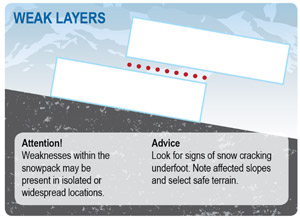
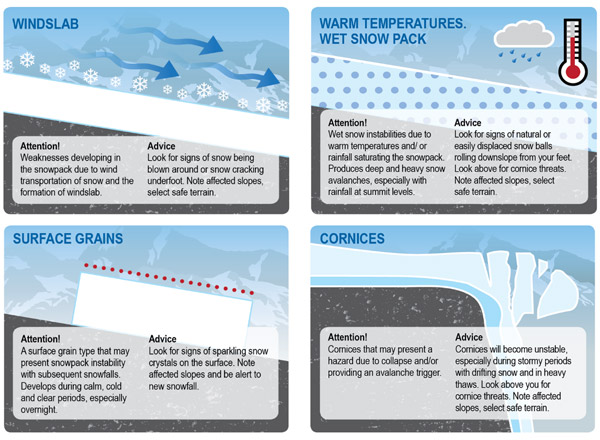
![]()
It’s important to remember that an avalanche report is only one piece of a wider pool of information needed to make informed decisions. Weather reports, current/historic snowpack, skier experience/skill and terrain should all be noted and compiled to make the best possible judgement.
For more information on how to use these other factors have a read of the SAIS (Scottish Avalanche Information Service) guide.
Avalanche Resources
Avalanche Reports:
Scottish avalanche reports
European avalanche reports
Avalanche safety
How to interpret avalanche reports
Call 999 or 112
If you are venturing off-piste it's important to carry the essential backcountry ski equipment in case of an avalanche and the need to perform a rescue. It is just as vital that you know how to properly use the gear and regularly practice searches and rescues with friends.
Image Source: SAIS
![]()
About the Author:Pete Fletcher - Outdoor ExpertPete grew up hiking most of the trails in the Lake District before being introduced to skiing. A decade later and you're most likely to find him snowboarding, skateboarding or making a mean coffee. |






